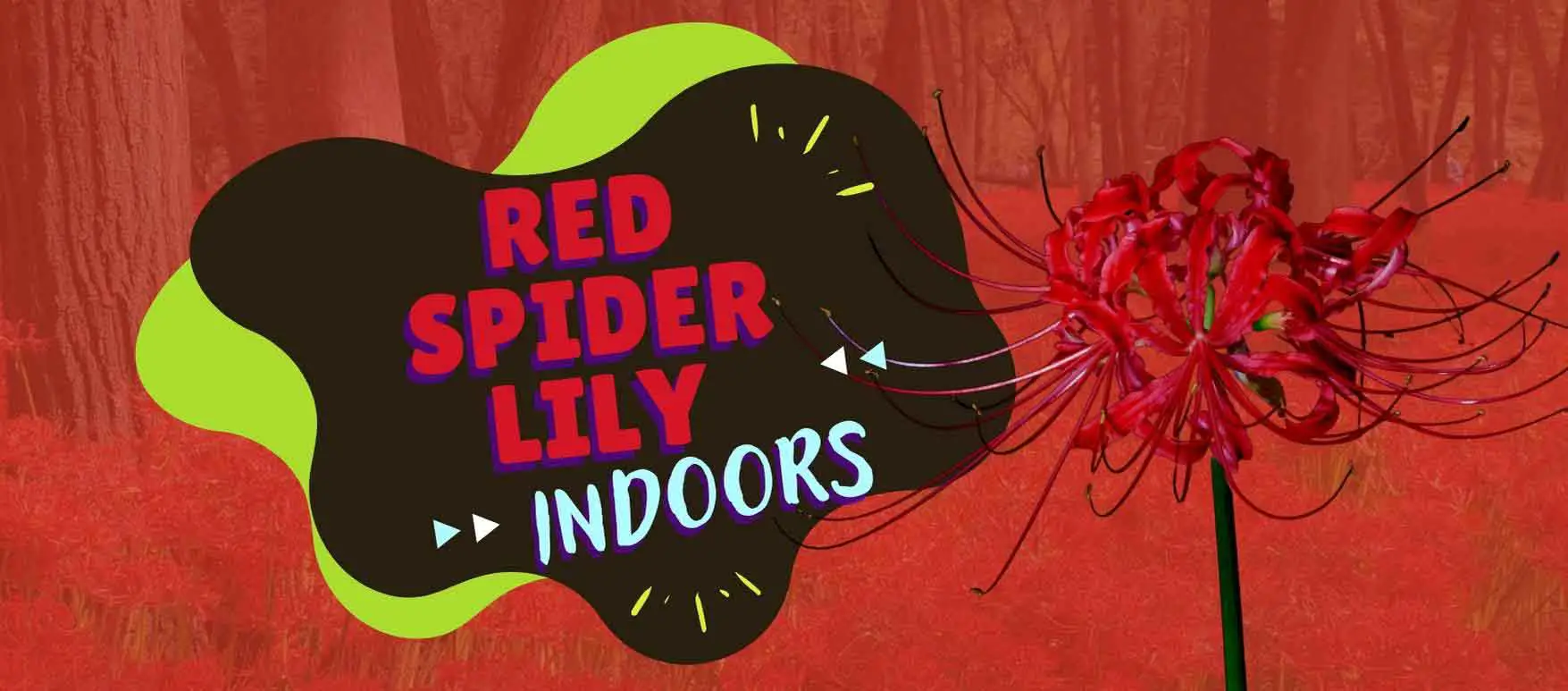Uncovering The Spiritual Significance Of Red Spider Lily
The flora of our world carry potent meanings and messages, framing the narratives of various cultures, religions, and individuals. One such example is the vibrant, ephemeral, and enthralling red spider lily. This unique flower has not only captured the imagination of peoples across time and space but has also been infused with a deep spiritual significance.
To decipher the rich tapestry of meanings associated with the red spider lily, this discourse traverses across cultural interpretations, mythology, the symbolism of death, and its representation in art and literature. Additionally, it will discuss how individuals might intertwine this flower into their personal spiritual beliefs and practices.
Symbolism of Red Spider Lily in Various Cultures
Symbolism of Red Spider Lily in Japanese Culture
In Japanese culture, the red spider lily, known as Higanbana or Manjushage, holds significant symbolism. Its blooming coincides with the arrival of autumn, marking the transition from the warm to the cold season. It’s considered a metaphor for transience, symbolizing the ephemeral nature of life and the inevitability of death.
This flower has a long connection with the Buddhist tradition of the Higan ceremony, a rite performed during the equinoxes. This has led to its association with the afterlife and reincarnation. Due to this relation, it’s a common sight in cemeteries and is used in funerals. Yet, its vibrant red color depicts passionate love and lost memories.
Moreover, Japanese folklore tells of the red spider lily as a flower of the underworld which guides the dead towards the next reincarnation. Consequently, it’s often viewed as a symbol of death, separation, and abandonment.
Meaning of Red Spider Lily in Chinese Traditions
In Chinese culture, the red spider lily, known as 彼岸花 (Bi’an Hua), also bears a spiritual connotation. The flower is commonly linked with themes of death, the afterlife, and reincarnation, similar to its symbolism in Japanese culture.
The red spider lily is a common motif in Chinese literature, reflecting sorrow, longing, and missed opportunities. In Chinese mythology, it’s believed that the flower grows on the other side of the river in the underworld, guiding the souls of the dead to cross the river. In this context, it’s often depicted as a symbol of longing, enduring love, and farewell to the past.
Red Spider Lily Symbolism in Korean Culture
The Korean symbolism of the red spider lily, known as 출렁화 (Chulreonghwa), is double-edged. On one hand, the flower is associated with the pain of separation, a notion that originates from a folk tale where lovers were turned into these flowers as punishment for their forbidden love.
On the other hand, its striking red color also symbolizes passionate love and the loyalty of a lover. Some believers also view it as a guide for spirits returning to earth during the Korean ‘Chuseok’ thanksgiving holiday, symbolizing the bridge between the spiritual and the physical worlds.
With symbolism steeped in love, loss, transition, and spiritual guidance, the red spider lily holds a significant place in various cultures.
This vibrant flower, while being closely associated with poignant themes of death and farewell, ironically, is profoundly cherished. The deep emotional and spiritual responses it provokes offer observers a unique sense of solace and introspection. The red spider lily constitutes a beautiful paradox with its alluring charm and profound meaning rooted in sorrow and parting.

Red Spider Lily in Mythology and Folklore
Tracing the Red Spider Lily in Mythology
Known in the scientific world as Lycoris radiata, the red spider lily carries a rich heritage from ancient Chinese, Japanese, and Korean mythologies and folklores. Its spiritual interpretations, deeply ingrained in these cultures, often revolve around themes of death, afterlife, reincarnation, and separation.
Chinese folklore suggests that red spider lilies bloom along the route when you’re enroute to bid farewell to someone you might not ever see again. This association casts a significant emphasis on the flower’s thematic ties to farewell and permanent separation, justifying its common presence in funeral ceremonies.
Japanese Spiritual and Cultural Significance
In Japanese culture and Buddhism, the red spider lily, or Higanbana, carries a poignant spiritual significance. It is often associated with the afterlife or guiding the dead into the next reincarnation. It’s believed that these flowers bloom along the Sanzu River’s edge, the Buddhist equivalent to the River Styx in Greek mythology. The flower is used to guide the way for the dead, helping them cross to the other side.
The red spider lily also blooms around the autumnal equinox during a Buddhist holiday known as Ohigan. The holiday signals a change of seasons and a time to honor ancestors. The flower’s bloom, coinciding with the occasion, symbolizes the short-lived beauty of existence, echoing Buddhism’s teachings about the impermanence of life.
Korean Mythology and the Red Spider Lily
In Korean mythology, the flower is a symbol of immense loyalty and determination. One ancient tale tells of a woman transformed into a red spider lily as a result of her unwavering search for her lost husband during a brutal war. This flower, laden with her sacrifice and unyielding love, has since been seen as a symbol of dedicated love and longing for lost ones.
However, despite these somber associations, the red spider lily is also seen as a protective entity. In some Asian cultures, it’s believed that planting these flowers around the house can keep away pests, evil spirits, and misfortune, further enhancing its spiritual symbolism.
Red Spider Lily: A Symbolic Entity in Literature and Art
The red spider lily holds profound links to concepts of death, afterlife, and permanent separation, making it an intriguing focus in the world of literature and art. Its powerful symbolism consistently manifests in striking Japanese haiku poetry and Aragoto, a vibrant Kabuki theatrical style that often incorporates red spider lily motifs in costumes.
Boiling down to its core, the spiritual essence of the red spider lily revolves around its depiction of life’s transient nature. The flower serves as a guide for the departed souls, a symbol of undying love, and a safeguard against evil forces. Despite its connection with grief and mortality, it concurrently stands for optimism, unveiling a fascinating blend of emotions and philosophies.

Red Spider Lily and Death
Red Spider Lily: Emblem of Death and the Hereafter
The red spider lily, or Lycoris radiata, is historically connected with themes of death and the afterlife. Considered a paradox of deadly beauty within Japanese culture, this dazzling yet toxic flower assumes a pivotal role in paying respect to departed spirits. Its bloom often syncs with the equinox that signifies the transition from summer to fall. This time is usually marked as Obon or Bon, a Buddhist custom respecting the spirits of ancestors.
The red spider lilies, often found flourishing along the path leading to cemeteries, are thought to guide the souls of the deceased. The sight of their blazing colors ignites the memory of lost loved ones and is a common sight during the Obon festival, serving as a potent symbol of remembrance.
Rituals and Symbolism involving Red Spider Lilies
In Japan, there are specific rituals involving red spider lilies. They are not usually given as a gift, as their association with death and mourning can give the act a negative or morbid connotation. During the Obon festival, families return to ancestral family homes and visit the graves of their departed relatives. It’s thought that the spirits of the ancestors return at this time, guided by the flowers’ bright red paths.
The flowers’ clear and striking red color symbolizes the intensity of the spiritual world, and the delicate, ephemeral nature of the spider lily is seen as a metaphor for human life—the beauty and brevity of existence. The flower’s fast blooming and wilting have made it a symbol of transient life and death.
Red Spider Lily and Its Role in Bereavement Rituals
In numerous cultures, red spider lilies are closely associated with funerals and memorial services. This association exists on account of a widely held belief that these beautiful flowers can guide the spirits of the deceased towards reincarnation. Consequently, they are often spotted around tombstones and gravesites.
Additionally, a relatively prevalent superstition suggests that should you plant a red spider lily in your garden, it could foretell a death. This belief stems from the flower’s strong link to mortality and the journey of the soul to the afterlife. Because of this, red spider lilies usually appear individually, and not as part of a bouquet or floral arrangement.
In various art forms and literature, the red spider lily holds symbolic significance, often representing lost memories and abandonment due to its connection to the underworld. Between life and death, the red spider lilies blossom. This marks a brief, beautiful reunion before an inevitable parting and, as such, these flowers are commonly used as symbols in love stories that are as tragic as they are touching.
The fact that such a visually striking flower has deep ties with death, the afterlife, and reincarnation is intriguing. Far from being grim, the spiritual meanings behind red spider lilies beautifully encapsulate the fleeting nature of life and the ceaseless cycle of life and death.

The Red Spider Lily in Art and Literature
The Import of Red Spider Lily in Japanese Art and Literature
Often represented in Japanese art and literature is the red spider lily, also known as Lycoris radiata. Boasting a rich red hue and a unique shape, the flower is not only a visually compelling subject matter but also one that resonates with profound spiritual meanings, particularly as an emblem of the soul or spirit’s journey post-death. It is a frequent feature in ink paintings and woodblock prints originating from Japan.
The red spider lily’s journey begins in China, from where it eventually made its way to Japan. In Japan, the flower found a place of prominence in cemeteries and by the deathbeds of people on their deathbeds. Further cementing the red spider lily’s spiritual association is its Japanese name- ‘higanbana’. The word signifies a connection to ‘the other shore’ or the netherworld in Buddhism, thereby indicating that the flower is meant to guide departed souls along their voyages across the metaphorical river separating life and death.
Symbolism in Japanese Folklore and Buddhism
In literature, the red spider lily represents loss, death, and the fleeting nature of existence in conformity with Buddhist teachings on impermanence. It is prevalent in Japanese folklore and dramas as a symbol of separation or the final goodbye. Thus, the red spider lily embodies the sadness and nostalgia that come with farewells. It is sometimes given to mourners at funerals in literature, paintings, and modern day media.
Furthermore, the red spider lily’s association with reincarnation and rebirth is deeply engraved in the Buddhist ethos. For instance, it is believed that if you encounter this flower in your path, it could either be a lost loved one visiting you or a sign that you will meet someone you will never see again, strengthening its spiritual meaning.
The Red Spider Lily in Modern Narratives
Modern Japanese narratives, particularly graphic novels (manga) and animated movies (anime), extensively utilize the motif of the red spider lily. For example, in the hugely popular manga and anime series “Naruto,” the villain, Pain, uses a technique called “Chikushōdō” (Animal Path) to summon a bundle of red spider lilies. Here, red spider lilies symbolize resurrection: a core theme running through the series.
The Blossoming of Red Spider Lily
Despite having a short bloom period, the red spider lily’s blossoming holds its own spiritual significance. The flower’s swift bloom and subsequent withering align with the Buddhist teaching of “mono no aware,” a term expressing the awareness of impermanence or, more specifically, the transient beauty of the physical world.
Its growth pattern is unique as its foliage only appears after the flowers have faded and fallen, marking it as a symbol of cyclical nature and the continuity of life even after death. Therefore, the red spider lily represents both an end and a new beginning, further amplifying its spiritual value in the understanding of life, death, and the afterlife.
Wrapping up, the spiritual significance of the red spider lily is deeply tied into its depictions in art and literature, culminating in a complex interpretation that includes themes of life’s ephemeral nature, the soul’s journey, and the charm in transient moments. These elements grant us a profound appreciation of its spiritual importance.

Personal Spirituality and the Red Spider Lily
The profound meanings behind the red spider lily
Internationally known as Lycoris radiata, the red spider lily endeared itself as a visually stunning flower carrying significant spiritual weight, specifically among the Eastern Asia cultures. This fascinating flora stands synonymous with the concepts of death, resurrection, and reincarnation due to its unique blooming cycles. Nevertheless, its spiritual implications are vast and can also be included into personal belief systems or spiritual experiences, extending far beyond these traditional connotations.
Understanding the Symbolism of The Red Spider Lily
The red spider lily is most famously known in Japanese culture, where it’s called “Higanbana” or “the flower of the afterlife”. In Buddhism, it’s believed that the flower guides the souls of the deceased to reincarnation.
The Red Spider Lily’s bloom closely aligns with the autumnal equinox, a period associated with the thinning veil between the physical and spiritual world. Thus, it is often used to commemorate the deceased during fall festivals and ceremonies, especially in Japan. Its vibrant red color symbolizes the afterlife’s fire, signifying the transformation and renewal of souls.
Furthermore, in Chinese folklore, the red spider lily is associated with the star Duo, linked with breaking of vows and oaths. It serves as a reminder of the consequences of breaching trust and the importance of staying true to one’s word.
Incorporating the Red Spider Lily into Personal Spirituality
Even though the red spider lily carries heavy associations with death and reincarnation, it is not exclusive to these meanings. Its vibrant hue and spice-like scent can symbolize passion, transformation, and the celebration of life itself within one’s personal spirituality. Its bright, fiery color can be tied to the element of fire, representing transformation, renewal, and the purification of one’s spirit.
For spiritual practitioners who observe nature-based spirituality or paganism, the red spider lily can hold special significance. Its blooming season can celebrate the cycle of life, death, and rebirth, emphasizing nature’s continual ebb and flow. Observing the flower’s bloom can become a valuable meditation tool, allowing individuals to reflect on personal growth and transformation.
Additionally, using the red spider lily in personal altars or sacred spaces can symbolize a connection to the afterlife, serving as a reminder of the soul’s eternal journey. Given its association with the promise-keeping star Duo in Chinese folklore, using this plant in your spiritual practices could also symbolize honesty, promise, and commitment.
While the red spider lily has roots in Eastern spiritual practices, its meanings and uses can be adapted to resonate with an individual’s personal spiritual beliefs. Whether one is drawn to its deep-rooted cultural symbolism or simply its undeniable beauty and strong fragrance, this captivating flower can add enriching elements to one’s spiritual journey.

As a testament to the multidimensional beauty of nature, the red spider lily blends the cheerfulness of its colors with the solemnity of its spiritual connotations. It blossoms from the embrace between life and death, reality and myth, art and symbolism, imbuing it with a compelling power as both an aesthetic wonder and a bearer of profound significance. With an understanding of the diverse cultural narratives, folklore, and personal reflections woven around this vibrant flower, one can fully appreciate its spiritual resonance. The red spider lily remains a strong reminder that even the simplest of nature’s creations can reflect humanity’s most profound beliefs and challenging experiences.





